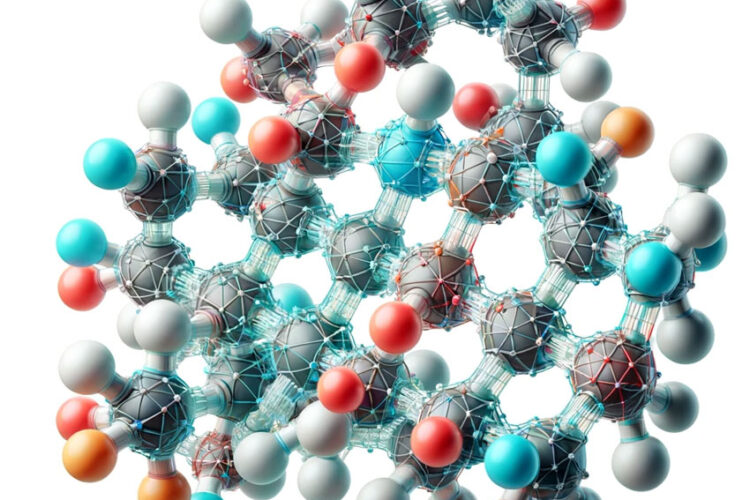Manuka honey is a type of honey that is produced in New Zealand and has gained popularity in recent years for its potential health benefits. One of the most important components of Manuka honey is MGO, which stands for methylglyoxal. MGO is a natural compound that is found in varying concentrations in Manuka honey and is responsible for many of the honey’s therapeutic properties.
This article will explore what MGO is, why it is important in Manuka honey, how MGO levels are measured, and factors that can affect MGO levels. We will also provide tips for choosing the right MGO level to suit your needs.
Key Takeaways
- MGO is a natural compound found in Manuka honey that is responsible for many of its therapeutic properties.
- The concentration of MGO in Manuka honey can vary widely, ranging from as low as 80 to as high as 1000 mg/kg.
- Understanding the role of MGO in Manuka honey is important for choosing the right product to suit your needs.
What is MGO
Manuka honey is a special type of honey that is produced in New Zealand and Australia. It is made by bees that feed on the nectar of the Manuka tree. Manuka honey is known for its unique antibacterial properties, which are attributed to a natural compound called MGO.
MGO, or methylglyoxal, is a naturally occurring organic nutrient found in Manuka honey. It is responsible for the honey’s potent antibacterial properties. While all-natural honey has some antibacterial effects, scientists have discovered that Manuka’s effects are much more potent, thanks to MGO.
MGO is formed in the Manuka flower from dihydroxyacetone (DHA), which is found in high concentrations in the nectar of the Manuka tree. The bees collect the nectar and convert it into honey, which contains high levels of MGO.
The level of MGO in Manuka honey is measured using a rating system called the Unique Manuka Factor (UMF). The UMF rating indicates the level of MGO and other beneficial compounds in the honey. The higher the UMF rating, the higher the level of MGO and other beneficial compounds.
Manuka honey with a UMF rating of 10 or higher is considered to have therapeutic properties. It is used to treat a range of conditions, including sore throats, digestive issues, and skin infections.
Importance of MGO in Manuka Honey
Manuka honey is a type of honey that is produced by bees that pollinate the Manuka bush, which is native to New Zealand. What sets Manuka honey apart from other types of honey is its high concentration of a natural compound called MGO, which stands for methylglyoxal. MGO is responsible for many of the therapeutic properties of Manuka honey.
Health Benefits
Manuka honey has been used for centuries for its health benefits. The high concentration of MGO in Manuka honey makes it a powerful antioxidant and antimicrobial agent. It has been shown to have antibacterial, antiviral, and antifungal properties, which can help to prevent and treat a wide range of infections.
Manuka honey has also been shown to have anti-inflammatory properties, which can help to reduce inflammation throughout the body. This can be particularly beneficial for people with inflammatory conditions such as arthritis or asthma.
Unique Antibacterial Properties
Unlike other types of honey, which contain hydrogen peroxide as their main antibacterial component, Manuka honey contains MGO, which remains stable and potent even when exposed to heat, light, and enzymatic activity. This makes Manuka honey a reliable choice for various applications, from skincare to digestive health.
In fact, Manuka honey has been shown to be effective against a wide range of bacteria, including antibiotic-resistant strains such as MRSA. This makes it a valuable tool in the fight against antibiotic resistance, which is becoming an increasingly serious problem.
How MGO Level is Measured
MGO levels in Manuka honey are measured through precise laboratory testing that quantifies the concentration of Methylglyoxal in each batch. Methylglyoxal is a naturally occurring compound found in Manuka honey that is responsible for its antibacterial properties. The higher the MGO level, the stronger the antibacterial effect.
The MGO level is measured using a test called the MGO assay, which involves the reaction of Methylglyoxal with a chemical called 2,4-dinitrophenylhydrazine (DNPH). The reaction produces a yellow compound that is measured spectrophotometrically, and the MGO level is calculated based on the amount of yellow color produced.
It is important to note that MGO levels can vary depending on several factors, including the location of the beehive, the time of year, and the weather conditions. As a result, each batch of Manuka honey must be tested individually to determine its MGO level.
MGO levels in Manuka honey are typically expressed as a number followed by “MGO,” such as 100 MGO or 500 MGO. The higher the number, the stronger the antibacterial effect. It is important to choose a Manuka honey with a high enough MGO level to provide the desired health benefits.
Factors Affecting MGO Levels
Manuka honey is known for its high levels of MGO, which is responsible for its potent antibacterial properties. However, not all Manuka honey is created equal, and the MGO levels can vary depending on several factors.
Geographical Factors
The MGO levels in Manuka honey vary depending on the region where the bees collect nectar. The highest MGO levels are found in Manuka honey produced in New Zealand, where the Manuka bush is native. The climate, soil, and other environmental factors in New Zealand contribute to the high MGO levels in the honey.
Manuka honey produced in other regions, such as Australia, may have lower MGO levels due to differences in the environment. However, some Australian Manuka honey producers have developed methods to increase the MGO levels in their honey.
Bee Species
The species of bees that collect the nectar can also affect the MGO levels in Manuka honey. The European honeybee, which is commonly used in commercial beekeeping, may produce honey with lower MGO levels compared to native bees, such as the New Zealand native bee.
Some Manuka honey producers have started using native bees to collect the nectar, which can result in higher MGO levels in the honey. However, using native bees can be more challenging and expensive than using commercial bees.
Choosing the Right MGO Level
When it comes to choosing the right MGO level in Manuka honey, there are a few things to consider. The MGO level is an indication of the potency of the honey, and the higher the level, the more potent the honey is likely to be.
Here are some tips to help you choose the right MGO level:
- Determine your purpose: The MGO level you choose will depend on your intended use of the honey. If you are looking for a sweetener or honey to use in cooking, a lower MGO level may be sufficient. However, if you are looking for the therapeutic benefits of Manuka honey, a higher MGO level is recommended.
- Consider your budget: As the MGO level increases, so does the price of the honey. It’s important to consider your budget when choosing the right MGO level.
- Look for reputable brands: When choosing Manuka honey, it’s important to look for reputable brands that use independent testing to verify the MGO level. This ensures that you are getting a quality product.
- Check the label: The MGO level should be clearly indicated on the label. Look for a number that corresponds to the level of MGO in the honey.
Here is a table that shows the recommended MGO levels for different uses:
| Intended Use | Recommended MGO Level |
|---|---|
| Sweetener or cooking | 100-200 |
| General health and wellness | 200-400 |
| Therapeutic use | 400+ |




